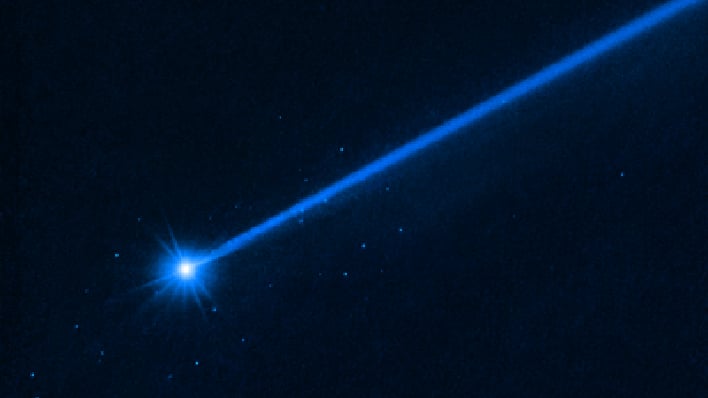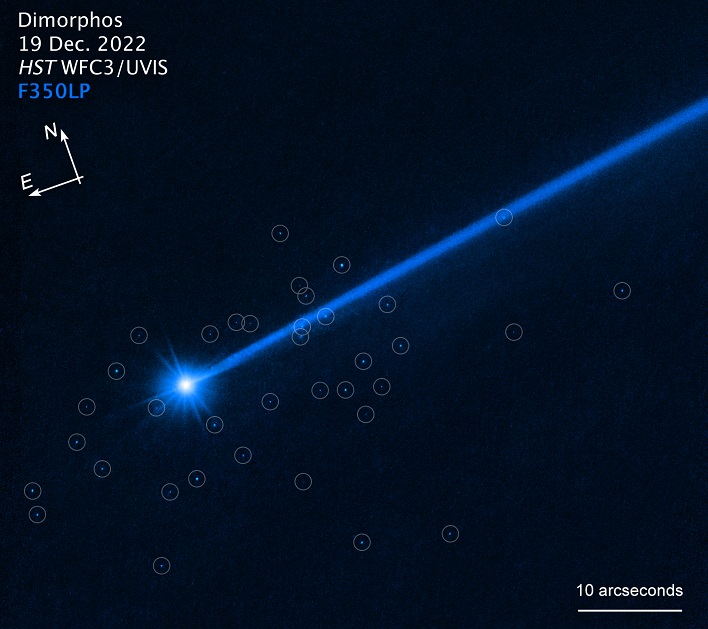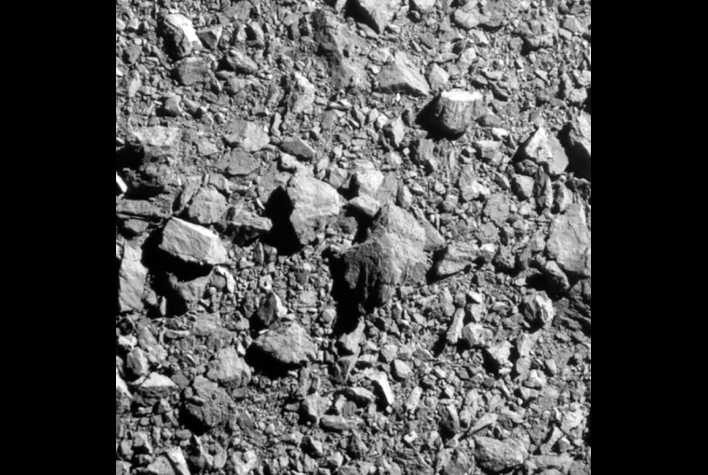NASA Reports A Swarm Of Space Boulders In Wake Of DART Asteroid Destruction

Double Asteroid Redirect Test, known as DART, is part of NASA's program to seek out potential defenses from an impending large asteroid impact. The spacecraft was successful in slightly changing the trajectory of asteroid Dimorphos. The result gives hope that if a doomsday asteroid, like the one believed to have caused the extinction of dinosaurs, were to be on an orbital path to impact Earth, it can diverted. Now, new findings are showing that the impact from DART left behind 37 free-flung boulders that range in size from 3 feet to 22 feet across.
The observations were made by utilizing the iconic Hubble Space Telescope's photometry. The images collected show the boulders slowly drifting away from the asteroid at a speed of a little over a half-mile per hour. They are each about 0.1% of the mass of Dimorphos. They are also some of the faintest objects ever photographed inside our solar system.

The finding unlocks another aspect for researching the aftermath of the DART mission utilizing the upcoming European Space Agency's (ESA) Hera spacecraft. Hera is slated to arrive at Dimorphos' and its binary partner Didymos' location in late 2026. The spacecraft will investigate the aftermath of DART's impact in greater detail than can be achieved by other space-based observatories.
"The boulder cloud will still be dispersing when Hera arrives," explains Jewitt. "It's like a very slowly expanding swarm of bees that eventually will spread along the binary pair's orbit around the Sun."

Jewitt estimates that DART's impact only shook loose about 2% of the boulders on the asteroid's surface. He adds that the boulders could have been "excavated" from a circle about 160 feet across.
"If we follow the boulders in future Hubble observations, then we may have enough data to pin down the boulder's precise trajectories. And then we'll see in which directions they were launched from the surface," explained Jewitt. Perhaps once scientists and astronomers are able to nail down the trajectory paths of the boulders, they can also predict if any of them would have been able to impact Earth following the impact by DART as well.

